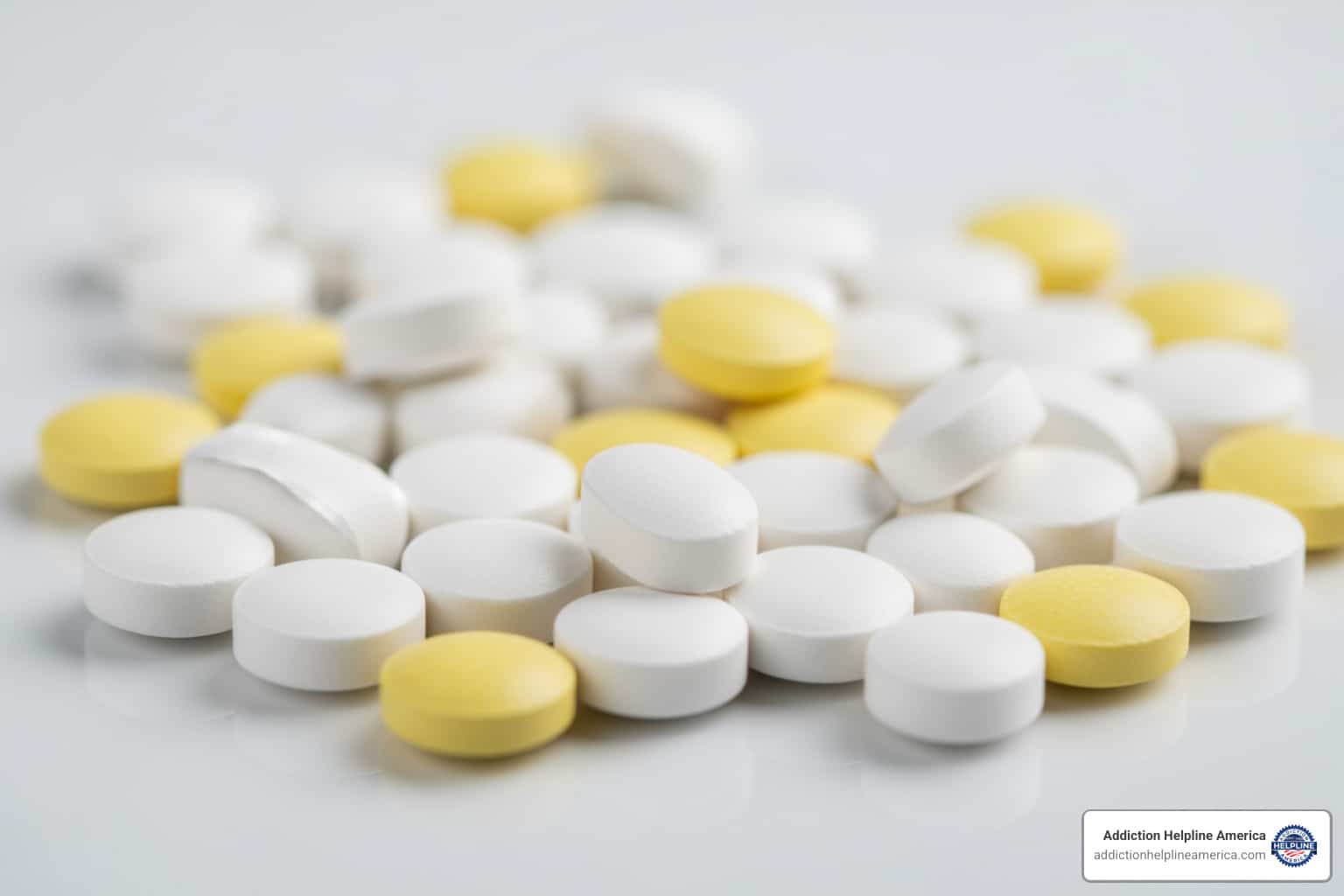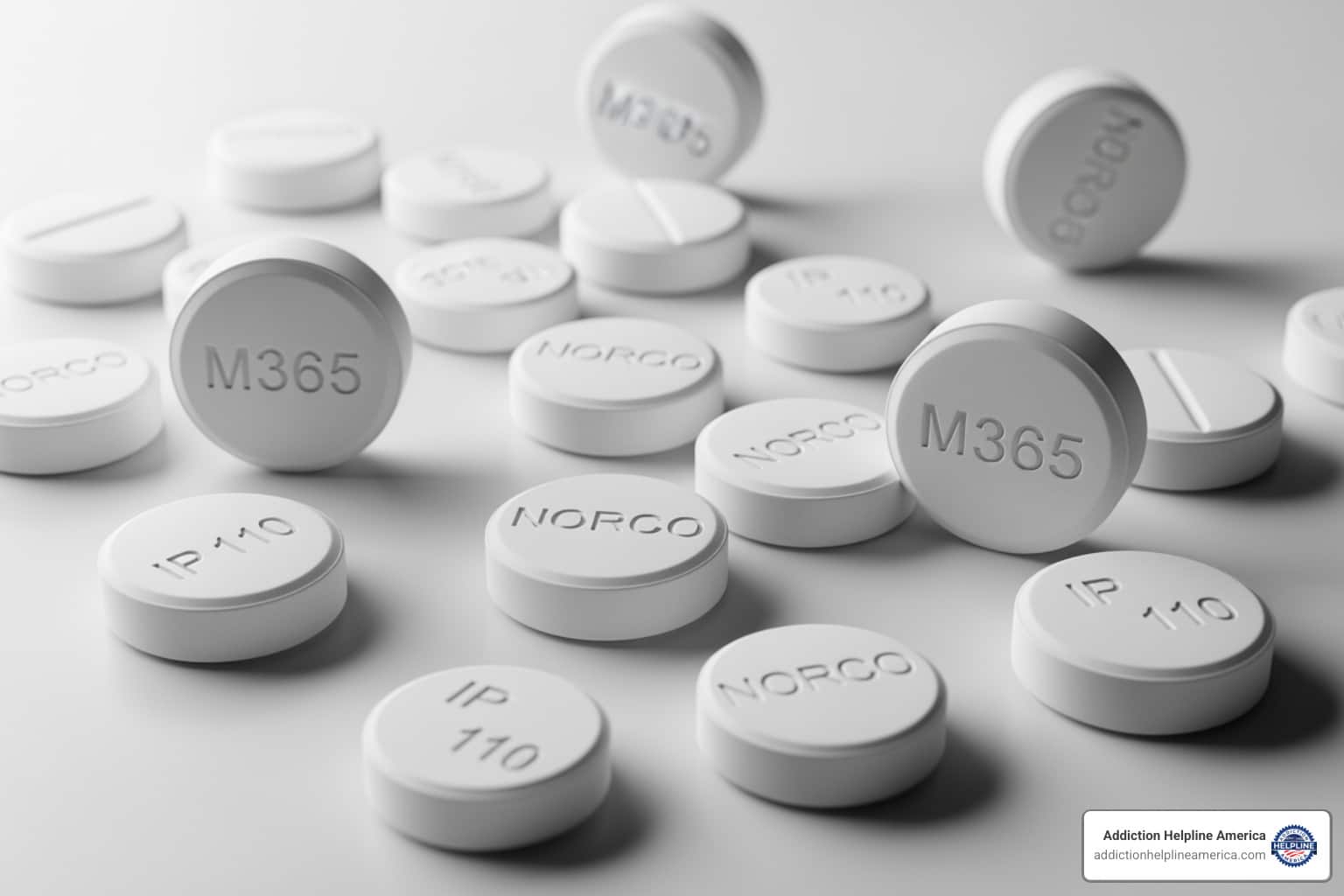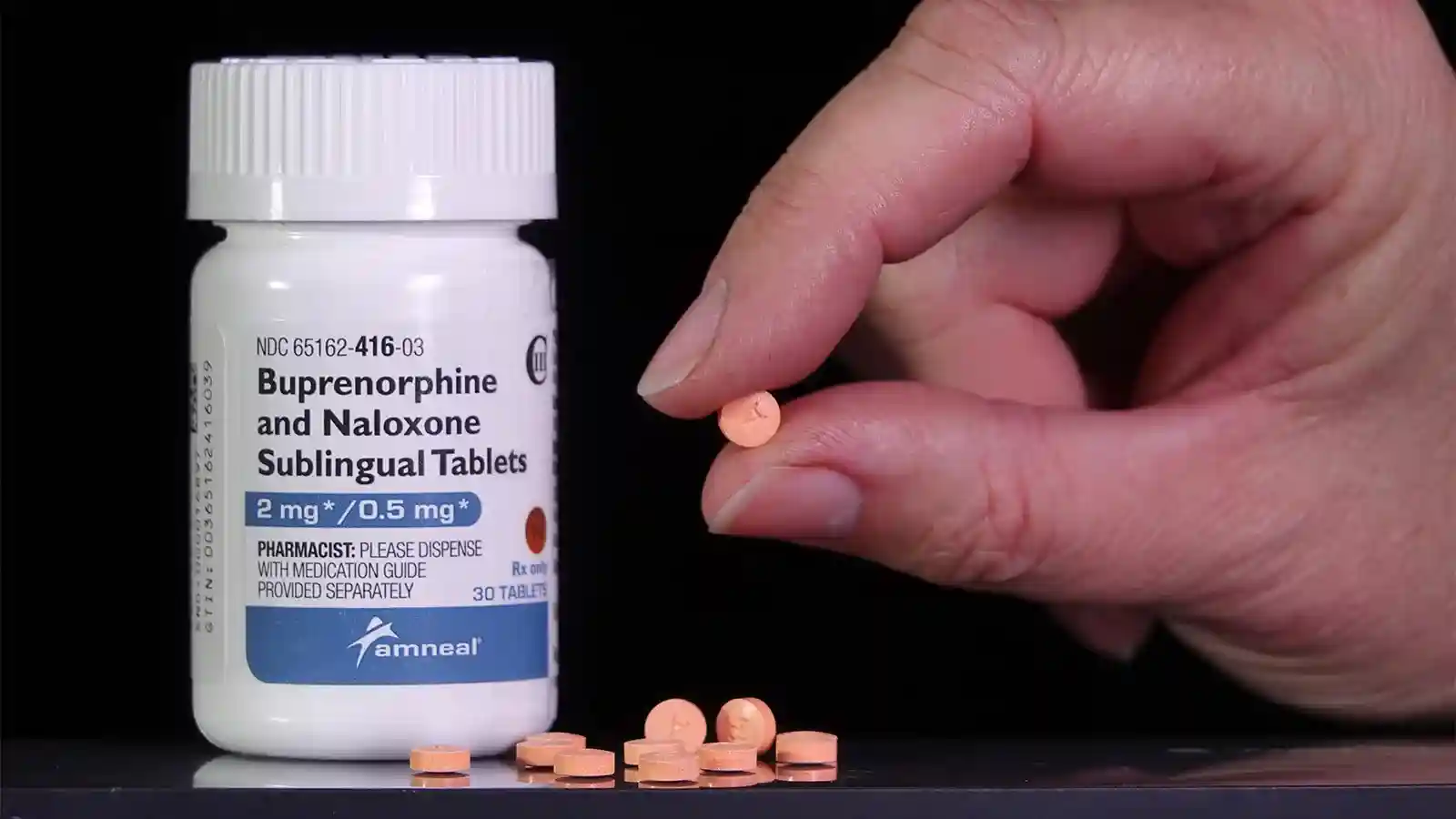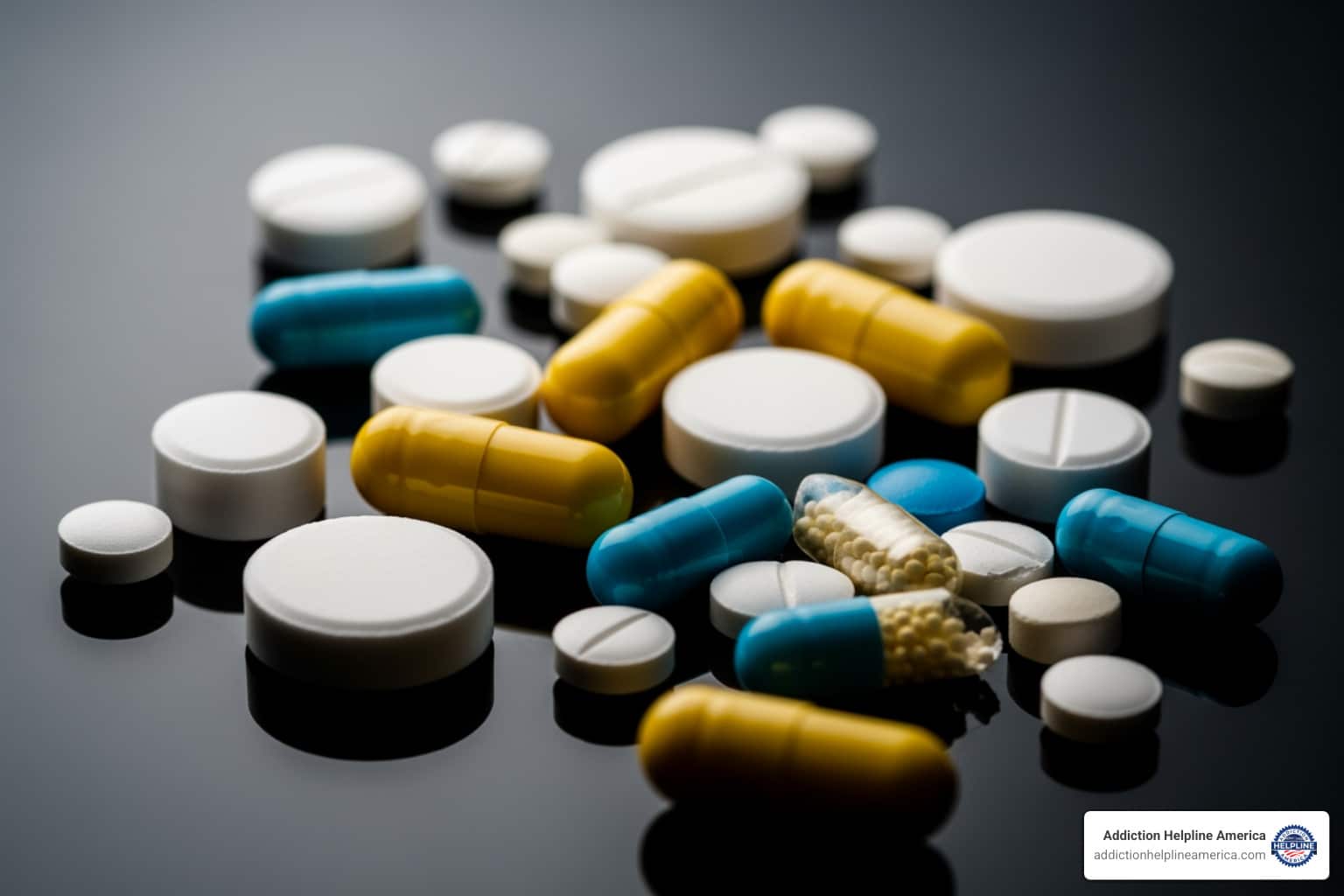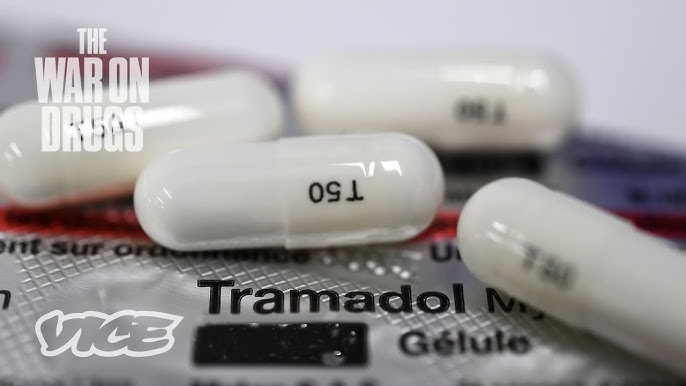
What You Need to Know About Tramadol
Tramadol is a prescription opioid used for moderate to severe pain. It has a dual mechanism of action, acting on opioid receptors while also affecting serotonin and norepinephrine levels. In 2023, it was the 36th most prescribed medication in the U.S., with over 16 million prescriptions.
Quick Facts About Tramadol:
- What it is: A centrally-acting analgesic (pain reliever) classified as an opioid
- What it treats: Moderate to moderately severe pain, including post-surgical pain and chronic conditions
- How it’s taken: Immediate-release tablets, extended-release tablets, or oral solution
- Legal status: Schedule IV controlled substance (prescription only)
- Key risks: Addiction, dependence, respiratory depression, seizures, and life-threatening side effects
- Maximum dose: 400 mg per day (unless otherwise directed by a doctor)
- Not for: Children under 12, or anyone under 18 after tonsil/adenoid surgery
While effective, tramadol carries significant risks, including addiction, serious breathing problems, and overdose, especially when mixed with alcohol or other drugs. Many users are unaware that tramadol is an opioid, increasing their risk of dependence and withdrawal.
At Addiction Helpline America, we’ve helped countless individuals and families steer the challenges of prescription opioid use, including tramadol addiction. Our addiction specialists provide 24/7 support, treatment referrals, and guidance for anyone struggling with tramadol dependence or seeking safer pain management alternatives.
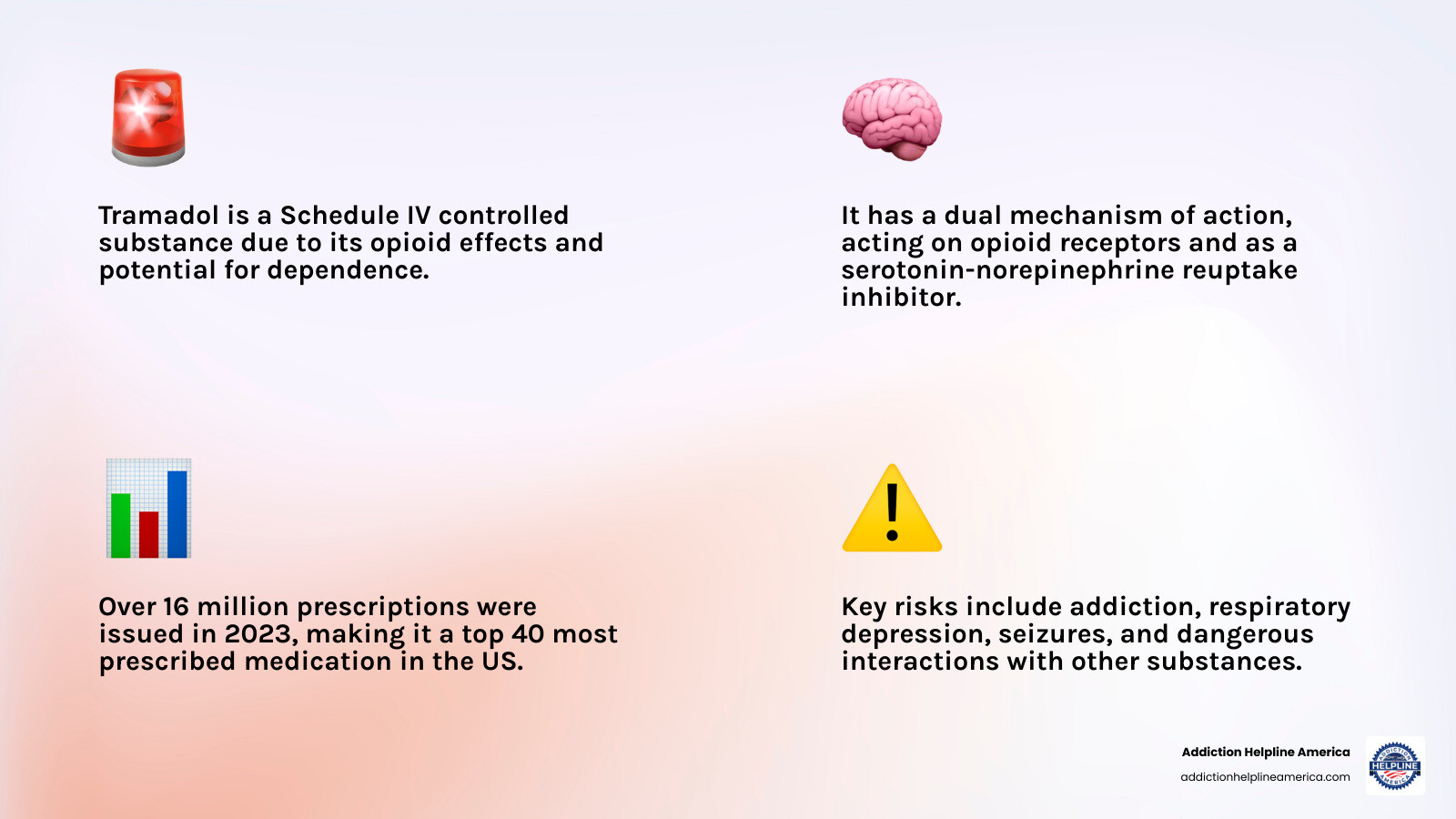
Understanding Tramadol: Uses, Forms, and Mechanism
Tramadol is an opioid, but its unique dual-action approach to pain relief sets it apart from typical painkillers.
How Does Tramadol Work?
Tramadol fights pain in two ways. First, it weakly binds to mu-opioid receptors in the brain, similar to morphine, to block pain signals. Its main opioid effect comes after the liver metabolizes it into a more potent compound, O-desmethyltramadol (M1). This conversion relies on the CYP2D6 enzyme, and genetic variations in this enzyme mean people metabolize the drug differently. “Ultra-rapid metabolizers” may experience stronger effects and higher risks, while “poor metabolizers” may get little pain relief.
Second, tramadol acts as a serotonin-norepinephrine reuptake inhibitor (SNRI). It increases levels of these two brain chemicals, which improves the body’s natural pain-dampening systems. This dual mechanism—combining opioid action with SNRI effects—makes tramadol effective for certain types of pain.
What Conditions Is It Prescribed For?

Doctors prescribe tramadol for moderate to moderately severe pain, often when over-the-counter medications are insufficient. For acute pain, such as after surgery, immediate-release tablets provide short-term relief.
For chronic pain, like osteoarthritis or diabetic neuropathy, extended-release formulations may be used when other non-opioid treatments have failed. However, due to the risks of dependence, tramadol is not typically a first-line treatment for chronic conditions.
It is also sometimes prescribed “off-label” for conditions like fibromyalgia, restless legs syndrome, and post-herpetic neuralgia, where a doctor weighs the potential benefits against the risks.
Available Forms and Dosages of tramadol
Tramadol is available as immediate-release (IR) tablets and oral solutions for as-needed pain relief, and as extended-release (ER) tablets and capsules for around-the-clock pain control.
The typical adult dose for IR tramadol is 50 mg to 100 mg every four to six hours, not to exceed 400 mg per day. ER formulations usually start at 100 mg once daily and can be increased to 300 mg per day.
It is critical to swallow extended-release tablets whole. Never chew, break, crush, or dissolve them, as this can release a fatal dose of the medication all at once.
For detailed instructions, consult the official patient information from the FDA and always follow your doctor’s specific directions.
The Risks of Tramadol: Side Effects, Overdose, and Misuse
While tramadol can relieve pain, it comes with risks that require your full attention. At Addiction Helpline America, we believe being informed is the first step to safety.
Common and Serious Side Effects
Many people experience temporary side effects when starting tramadol. The most common include dizziness, nausea, constipation, headaches, drowsiness, vomiting, dry mouth, and sweating. While often manageable, you should talk to your doctor if they are severe or persistent.
More serious side effects require immediate medical attention:
- Seizures: Tramadol lowers the seizure threshold, increasing risk, especially at high doses. In 2011, tramadol was linked to 21,649 emergency room visits, with seizures being a significant factor.
- Serotonin Syndrome: A potentially fatal condition caused by too much serotonin in the brain. Symptoms include agitation, hallucinations, racing heart, fever, and muscle stiffness. The risk is higher when taken with antidepressants (SSRIs, SNRIs, MAOIs).
- Respiratory Depression: Dangerously slow or shallow breathing. This is the deadliest side effect, with the highest risk when starting the medication or increasing the dose.
- Severe Allergic Reactions: Anaphylaxis, with symptoms like hives, difficulty breathing, or swelling of the face, lips, tongue, or throat.
- Long-Term Effects: These can include adrenal insufficiency (fatigue, weakness, low blood pressure), low sodium levels (hyponatremia), and low blood sugar (hypoglycemia).
If you experience any serious symptoms, call your doctor or seek emergency care. You can also report adverse events to the Report serious side effects to the FDA.
Overdose Signs and What to Do
A tramadol overdose is a medical emergency, especially when mixed with alcohol, benzodiazepines, or other opioids.
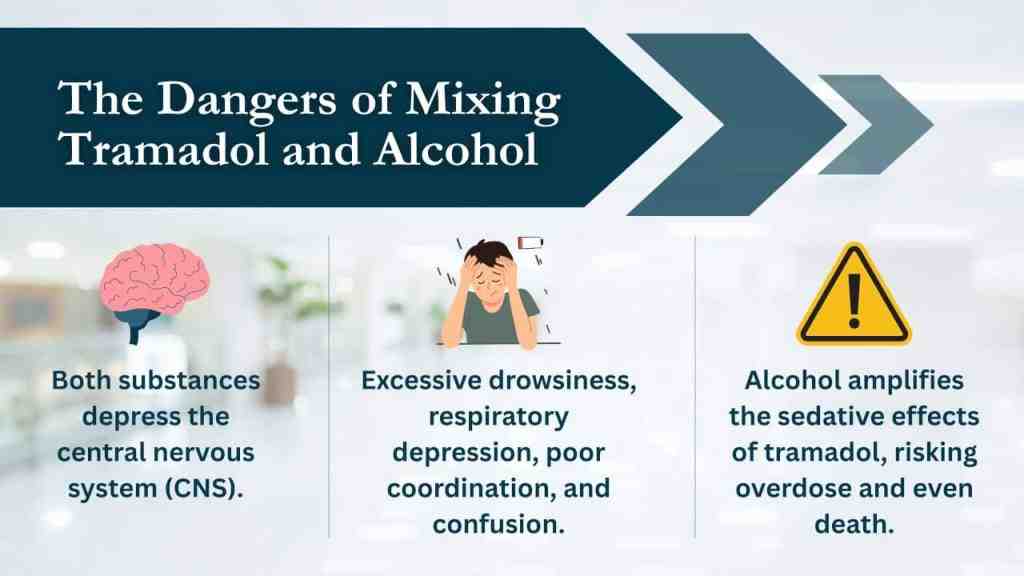
Overdose signs include pinpoint pupils, slow or stopped breathing, extreme drowsiness or unresponsiveness, a slow heartbeat, limp muscles, and cold, clammy skin. Seizures may also occur.
If you suspect an overdose: Call 911 immediately. If available, administer naloxone (Narcan), a medication that can reverse an opioid overdose. Ask your doctor about getting a naloxone kit. Stay with the person and turn them on their side until help arrives.
For more guidance, contact the Poison Control helpline at 1-800-222-1222 or visit Contact the Poison Control helpline.
Dependence, Addiction, and Withdrawal with tramadol
Tramadol is an opioid with a risk of dependence and addiction. In 2014, it was reclassified as a Schedule IV controlled substance due to its potential for abuse.
Physical dependence is a biological adaptation where the body needs the drug to function normally. Stopping suddenly causes withdrawal. Tolerance may also develop, where higher doses are needed for the same effect, increasing risks.
Addiction is a chronic disease involving compulsive drug use despite negative consequences. Anyone can be affected, but those with a history of substance abuse are at higher risk.
Tramadol withdrawal is uniquely difficult, featuring both typical opioid withdrawal symptoms (body aches, fever, chills, cravings) and atypical symptoms from its SNRI effects (hallucinations, paranoia, anxiety, panic attacks, confusion). Symptoms usually start 8-24 hours after the last dose and can last for days if untreated.
Signs of misuse include taking more than prescribed, using it more often, or seeking multiple prescriptions. If you are concerned about dependence or addiction, help is available. Learn more at our resources: Tramadol Withdrawal Symptoms, Tramadol Addiction Help, and Tramadol Addiction Treatment.
Safe Use, Precautions, and Alternatives
Using tramadol safely requires understanding how it interacts with your health, other substances, and medications.
Important Precautions and Drug Interactions
- Alcohol: Never mix alcohol and tramadol. The combination greatly increases the risk of extreme drowsiness, respiratory depression, and fatal overdose.
- Antidepressants: Combining tramadol with SSRIs, SNRIs, or MAOIs can cause serotonin syndrome, a dangerous condition. Inform your doctor about any antidepressants you take.
- CNS Depressants: Avoid combining tramadol with benzodiazepines (like Xanax), sedatives, or other opioids. This can lead to profound sedation, breathing problems, coma, or death.
Certain groups are more vulnerable to tramadol‘s risks:
- Children and Teens: Tramadol should never be given to children under 12. The FDA also warns against its use for pain after tonsil or adenoid surgery in teens under 18, due to the risk of life-threatening breathing problems.
- Older Adults: Those over 75 are more sensitive to tramadol‘s effects and face a higher risk of falls and other complications. Lower doses and careful monitoring are essential.
- Pregnancy and Breastfeeding: Using tramadol during pregnancy can cause Neonatal Opioid Withdrawal Syndrome in the baby. It is also not recommended while breastfeeding, as it passes into breast milk.
- Liver or Kidney Disease: Impaired organ function can cause the drug to build up to dangerous levels, requiring dose adjustments.
- Genetic Factors: People who are “ultra-rapid metabolizers” of the CYP2D6 enzyme may have an increased risk of side effects. Always provide your doctor with a complete medical history.
Safe Storage and Disposal
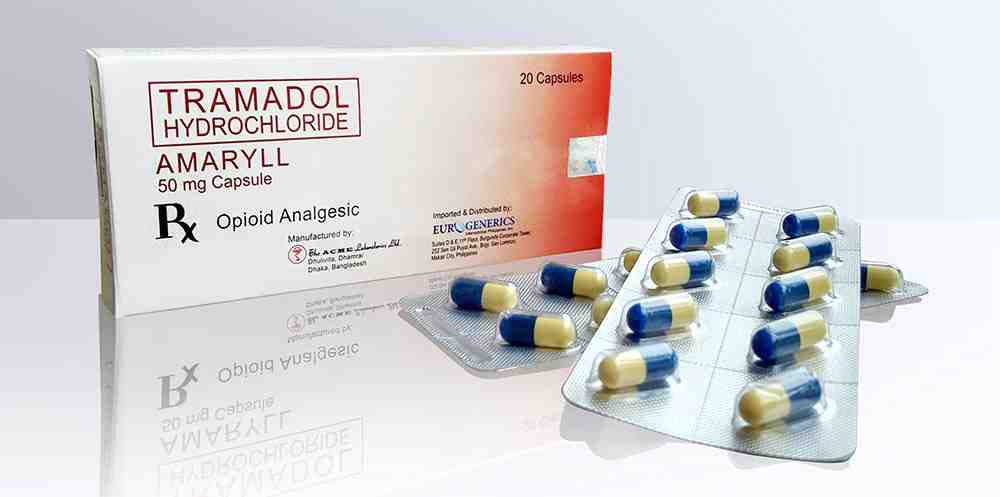
Store tramadol in a secure location, like a locked cabinet, out of reach of children and pets. For tips, visit Safe medication storage tips.
Do not flush unused tramadol or throw it in the trash. The safest method is a medicine take-back program at a local pharmacy or police station. If a program isn’t available, follow the FDA guidelines on safe disposal by mixing the medication with an undesirable substance (like coffee grounds), sealing it in a bag, and placing it in the household trash. Dispose of unused medication promptly to prevent misuse.
Alternatives for Pain Management
Given the risks of opioids like tramadol, exploring other pain management strategies is crucial, especially for chronic pain.
- Non-Opioid Medications: NSAIDs (ibuprofen, naproxen) and acetaminophen (Tylenol) are effective for mild to moderate pain. Certain antidepressants and anticonvulsants can help with nerve pain.
- Physical and Complementary Therapies: Physical therapy can address the root cause of pain by improving strength and flexibility. Acupuncture and massage therapy can also help manage pain by stimulating the body’s natural relief mechanisms.
- Lifestyle Changes: Activity pacing helps balance rest and activity to prevent pain flares. Learn more at Activity pacing techniques. Mind-body practices like mindfulness and yoga, regular exercise, a healthy diet, and adequate sleep are also powerful tools for managing pain.
A comprehensive pain management plan often combines several of these strategies. If you’re concerned about tramadol dependence, we can help you explore safer alternatives.
Frequently Asked Questions about Tramadol
Here are clear, honest answers to common questions about tramadol to help you make informed decisions.
Can you drink alcohol while taking tramadol?
No, you should never drink alcohol while taking tramadol. Both are central nervous system depressants, and combining them multiplies their effects. This combination creates a high risk of life-threatening side effects, most notably respiratory depression (dangerously slow breathing), which can lead to coma or a fatal overdose. Even one drink can cause extreme drowsiness and impair your judgment. For your safety, avoid alcohol completely while on this medication.
How long does tramadol stay in your system?
Tramadol‘s half-life is about 6-7 hours, meaning half the drug is eliminated from your body in that time. It takes about five half-lives for a drug to be almost fully cleared. However, detection times vary by test type:
- Urine: 1 to 4 days
- Blood: Up to 24 hours
- Saliva: Up to 48 hours
- Hair: Up to 90 days or more
Factors like your age, metabolism, liver and kidney function, and duration of use can affect how quickly your body processes the drug. If you plan to stop taking tramadol, consult your doctor for a safe tapering plan.
Is tramadol used for pets like dogs and cats?
Yes, veterinarians sometimes prescribe tramadol for pain in animals like dogs and cats. However, it must only be administered under a vet’s guidance. The dosage and how animals metabolize the drug are very different from humans. A safe dose for you could be toxic to a pet. Never give your human medication to pets. If your pet is in pain, contact your veterinarian for a proper diagnosis and safe treatment plan.
Conclusion: Making Informed Decisions
You now have a clearer picture of tramadol: an effective pain medication that demands respect and careful use. While its dual-action mechanism can provide relief, it is an opioid with serious risks, including breathing problems, seizures, dependence, and addiction.
Safe use of tramadol is paramount. This means maintaining open communication with your doctor, sharing your full medical history, and following your prescription exactly. Never take more than prescribed, and never crush or break extended-release tablets. Be vigilant for warning signs of overdose (slowed breathing, extreme drowsiness, pinpoint pupils) and dependence (compulsive use, withdrawal symptoms).
Whenever possible, explore alternatives for pain management. Physical therapy, non-opioid medications, acupuncture, and lifestyle changes like Activity pacing techniques can offer lasting relief without the risks of opioids.
At Addiction Helpline America, we have helped many people steer the complexities of prescription opioid use. We’ve seen the struggles, but we’ve also witnessed the triumphs of recovery. Our team is available 24/7 to provide free, confidential support, whether you’re concerned about your tramadol use, worried about a loved one, or ready to explore treatment options.
You don’t have to figure this out alone. If you or someone you care about is struggling with tramadol dependence or addiction, we’re here to connect you with specialized care from our nationwide network of treatment centers.
Our helpline is 100%
free & confidential
If you or someone you care about is struggling with drug or alcohol addiction, we can help you explore your recovery options. Don’t face this challenge alone—seek support from us.
Programs
Resources
Will my insurance
cover addiction
treatment?
We're ready to help
Find the best
drug or alcohol treatment
center
Are you or a loved one struggling with addiction? Call today to speak to a treatment expert.



